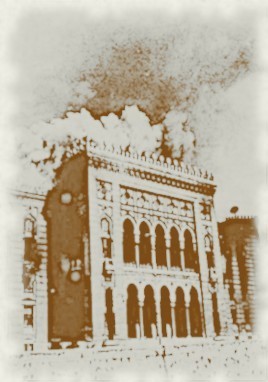


For the central focus of this study, all the posts on Twitter since January 1, 2007 by 64 prominent American libraries, or in four cases librarians, were reviewed through qualitative analysis. I began the list of users largely based on more than ten years of following rare book issues on Twitter myself, but additional Twitter accounts were added because of connections to cities with large numbers of Bosnian immigrants or large collections of Islamic manuscripts. I included several complete academic library systems at major universities, because they oversaw libraries with relevant special collections and seemed to dominate the social media of the campus libraries. I also included some small, specialized libraries that had a focused interest on cultural heritage or book history.
Using the Academic Research track at the Twitter Developer API, I was able to search the entire public history of specific users, listed in Appendix A. Limits on the number of characters per search using the Postman app made it necessary to run single terms in two separate groups of users, but still, it was just a matter of running simple keyword searches against a list of Twitter accounts. The final terms used for this study can be found in Appendix B. Some of the initial searches returned irrelevant results or nothing at all. So, a number of initial search terms have not been analyzed for this paper but will be useful for later comparisons. Most notable among the poor results was the fact that the commonly used names for the two destroyed libraries by English speakers, the Oriental Institute of Sarajevo and the Vijecnica, did not appear in any tweets from this group in nearly fifteen years of Twitter. In fact, a search for "city hall sarajevo" did not bring up any new results beyond that found with other terms, either. More than 110 tweets did come up from these searches, however, which represents about 1% of the roughly 10,000-12,000 tweets created by these users, enough to say a few things about librarian views. It is worth remembering that Twitter did not exist in 1992, so the gathered tweets tended to reflect views on the general concept of library destruction, rather than horror at a recent atrocity.
The texts of the returned tweets were analyzed for sentiment using the Dedoose program to code and weight individual statements. Much of the coding merely identified the nature of the tweet, such as a retweet or an announcement of some event. However, each tweet was given a sentiment weight from 1-10 on what the tweet declared about the issue. Declarations were coded as only one type of either condemnation of library destruction, call for help for destroyed libraries, information about the destruction of these libraries, regret over the losses of war, or warning to protect other unique collections in the future. Some of these declaration categories that I set up could not be applied to any particular tweet, in the end, but that was valuable to the project in terms of determining the views that librarians did not consider. Initial analysis of the coding for this paper consisted of simple comparisons of sentiment weight and use of terms.
Additional sentiment research of librarian views online was conducted by downloading the text of library mission statements or, in some cases, collection strategies listed on the websites of special collections. The information on these sites varied a great deal, but no effort was made to track down annual reports or other official university statements unless such material was listed at the website of the collection without any other mission statement. The easier and more public nature of posting an "about" page means that they reflect the views of actual librarians more often than official university policies. Largely because time ran short, the texts of these websites were examined with just a simple word count analysis using Voyant Tools, for the group and for individual sites, to determine some general statements about what it is that librarians at these special collections think they do. What we can see is that the general goals of the libraries match up with the views expressed on Twitter about the need to give people access to their collections and a feeling that digitization offers hope for future preservation. Coming years after the events in Sarajevo, there was little sense that each library, or the book-loving public, had a responsibility to respond to the loss of culture with aid or condemnation, or even alarm at the possibility of being affected by disaster. The feeling was more that libraries should be ready to open their doors to help those who ask for it, while maintaining their position as stewards of their own material.
Few American institutions considered recovery or reconstruction of Sarajevo documents to be part of a larger cause that fit into the mission of the individual library. A final analysis of librarian sentiment looked not at public statements online, but at the views inherent in the collections themselves, available in the public catalog from those few collections that had a much more direct response to events in Bosnia. I compared the collections from the Human Rights Archive at Duke University, the Bosnia Memory Project at Fontbonne University, and the Fine Arts Library at Harvard University and compared them with several similar collections from the overall group to get a sense for what these three libraries considered important in forming their collections and how general those concerns might be to special collections in the United States. Each has a different approach, trying to include library destruction in the record of potential war crimes, to help the people who have left Bosnia-Herzegovina connect with common heritage, or to record the loss of cultural treasures, respectively. In the end, collections show how librarians seek to serve their users, to act as stewards of culture for their intended audiences, and to shape the foundations to humanities research.
